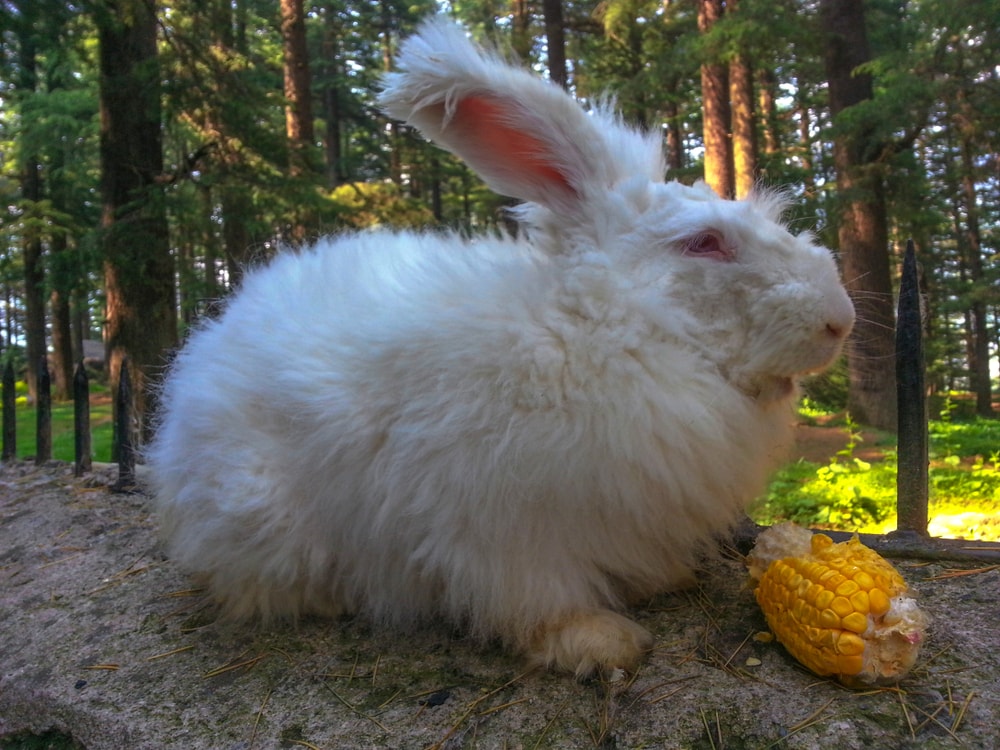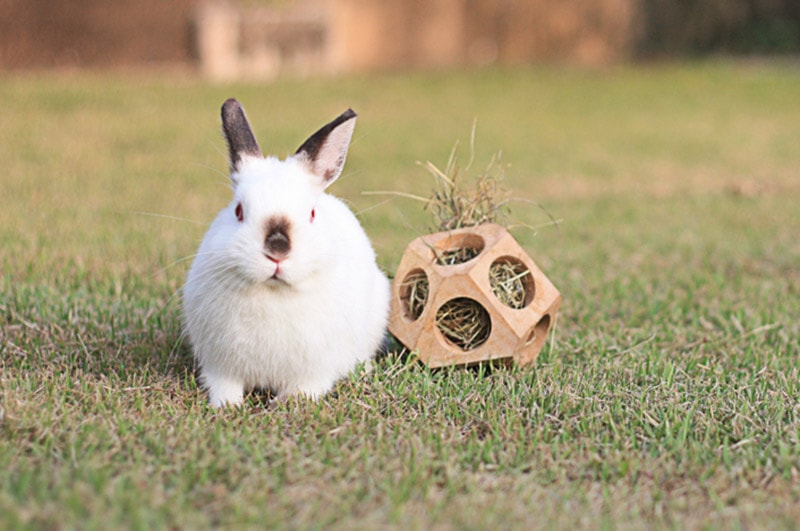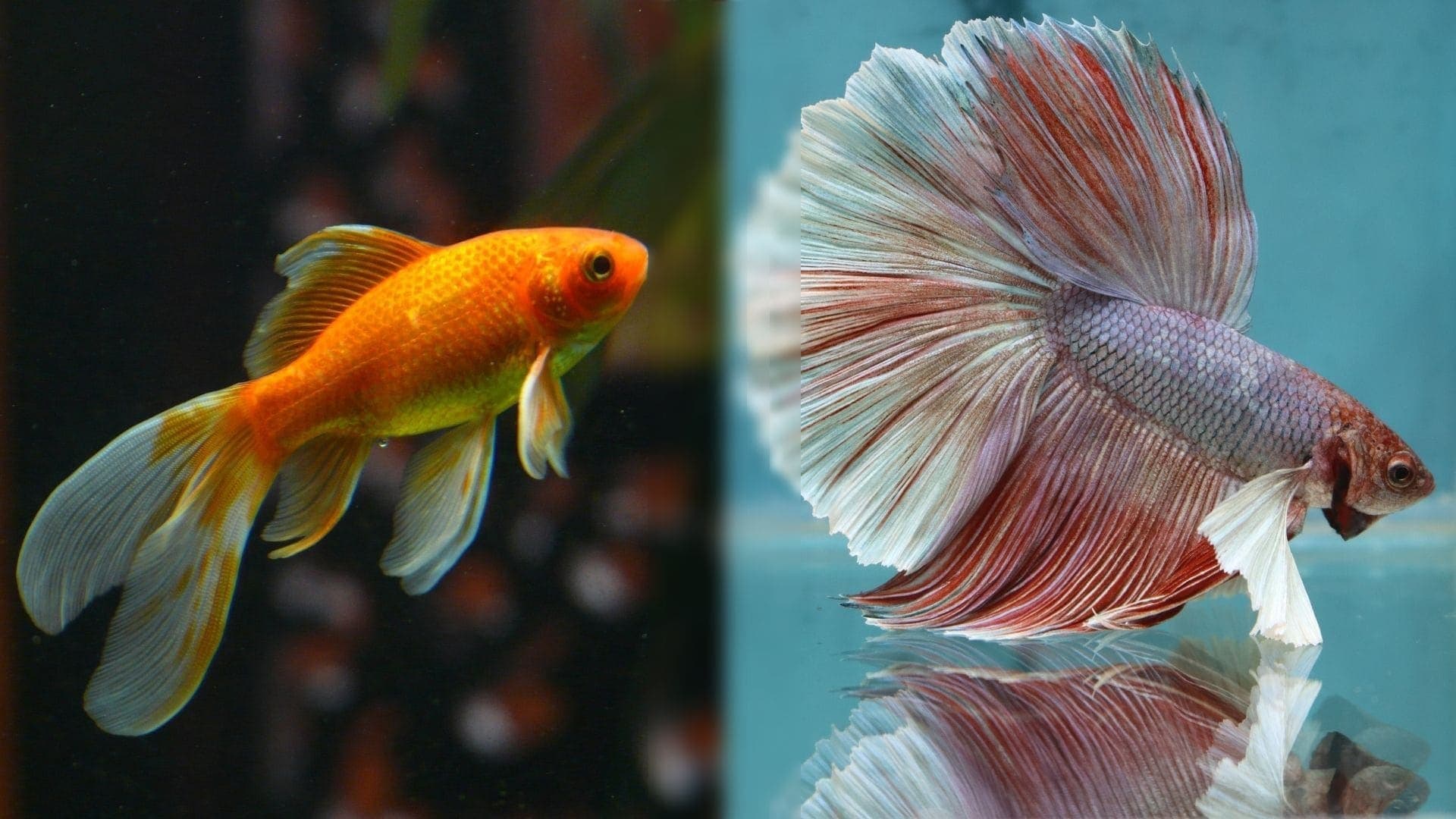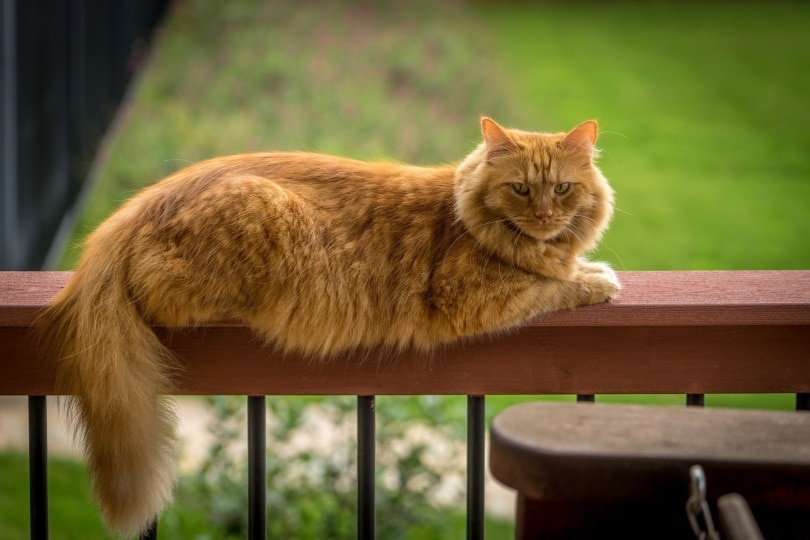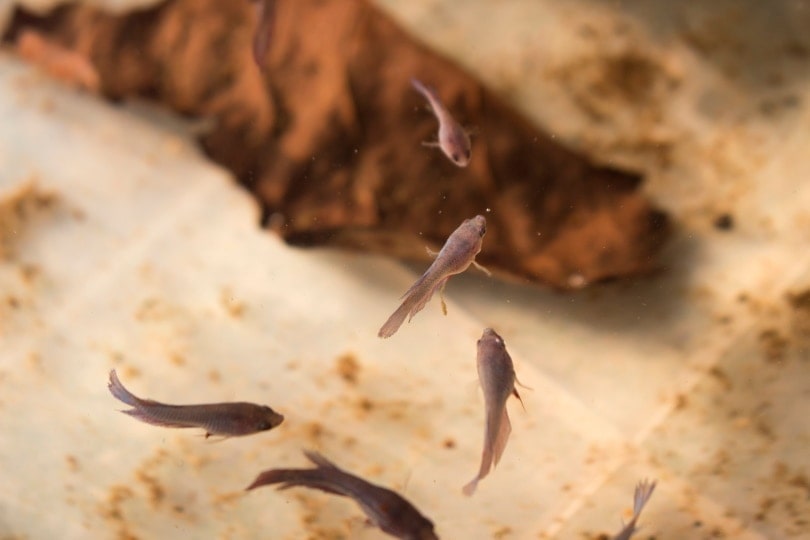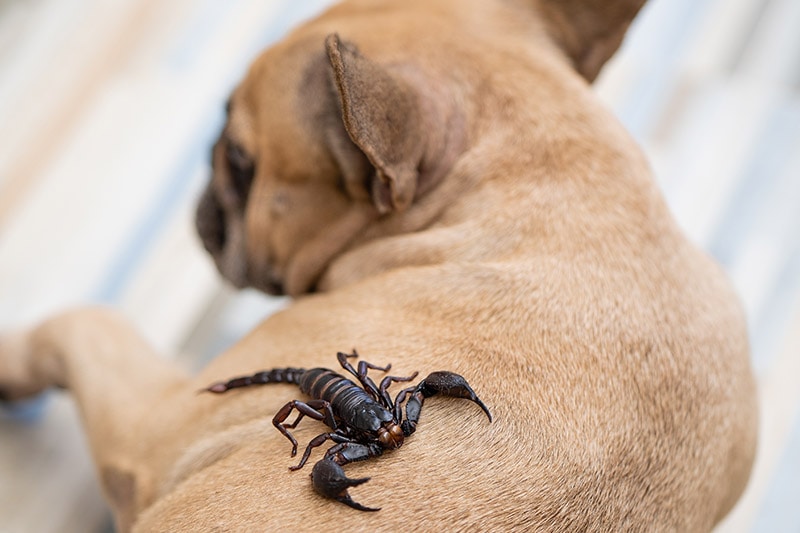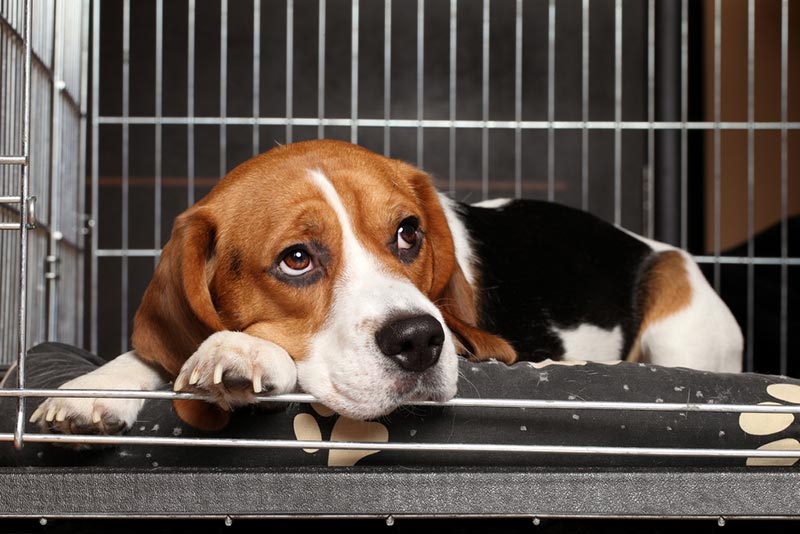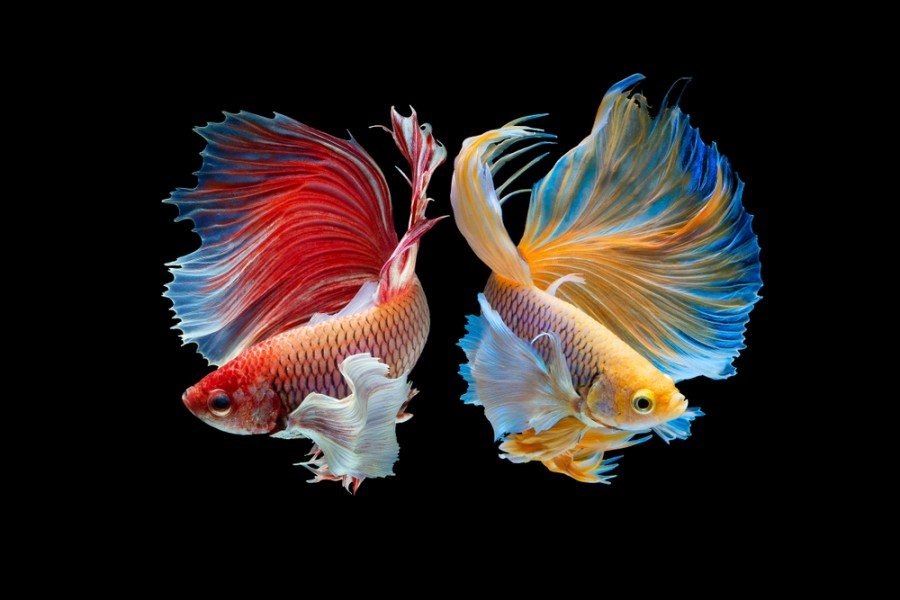12 Adorable Rabbit Colors & Patterns (With Pictures)
By Ashley Bates
Updated on
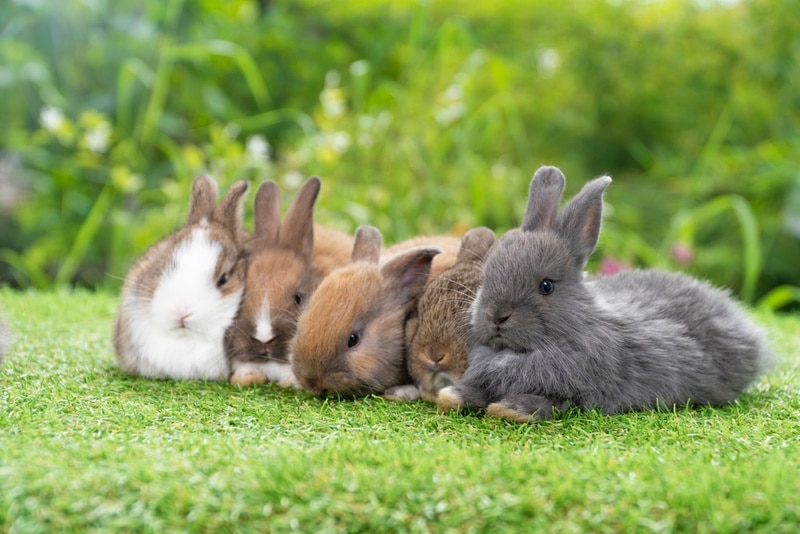
Rabbits certainly have an extensive amount of coat colors. Different breeds offer a spectrum of looks ranging from sleek, agile, and shiny to floppy, fluffy, and spotty. Researching the different breeds can show you the color wheel and what breeds tout these shades.
Here, we’re going to look at some pictures of a few cuties and learn about the different breeds and accepted colors. Enjoy!
The 12 Rabbit Colors & Patterns
1. White
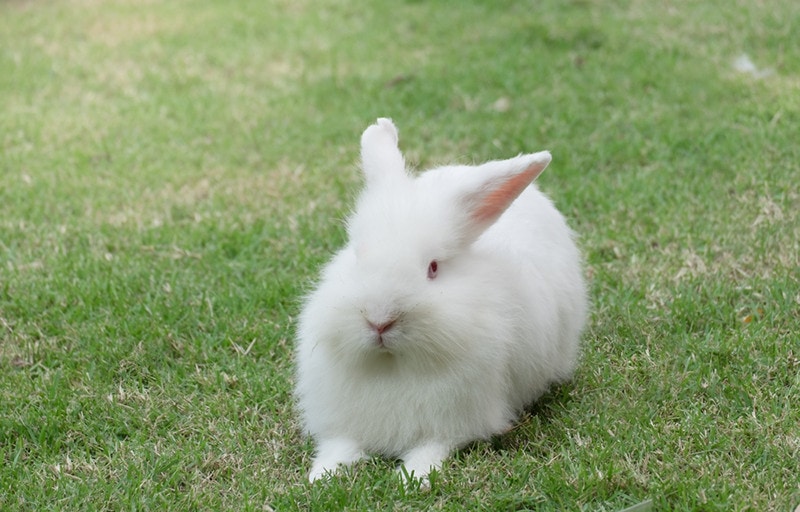
Rabbits can come in snow-white colors that are lovely indeed. White rabbits can have both blue and red eyes. They can also sport mostly white with frosty gray on ears or face.
Different versions of the white coloration can include:
- Blue eyed white
- Ruby eyed white
- Frosty
- Pearl
- Pointed white
Rabbit breeds that usually show this white coloration include:
- American
- Angora
- Beveren
- Blanc de Hotot
- Britannia Petite
- Californian
- Checkered Giant
- Crème d’Argent
- Dutch
- Dwarf Hotot
- Dwarf Papillon
- English Lop
- English Spot
- Flemish Giant
- Florida White
- French Lop
- Harlequin
- Himalayan
- Holland Lop
- Jersey Wooly
- Lionhead
- Mini Lop
- Mini Rex
- Mini Satin
- Netherland Dwarf
- New Zealand
- Polish
- Rex
- Rhinelander
- Satin
- Satin Angora
2. Tan
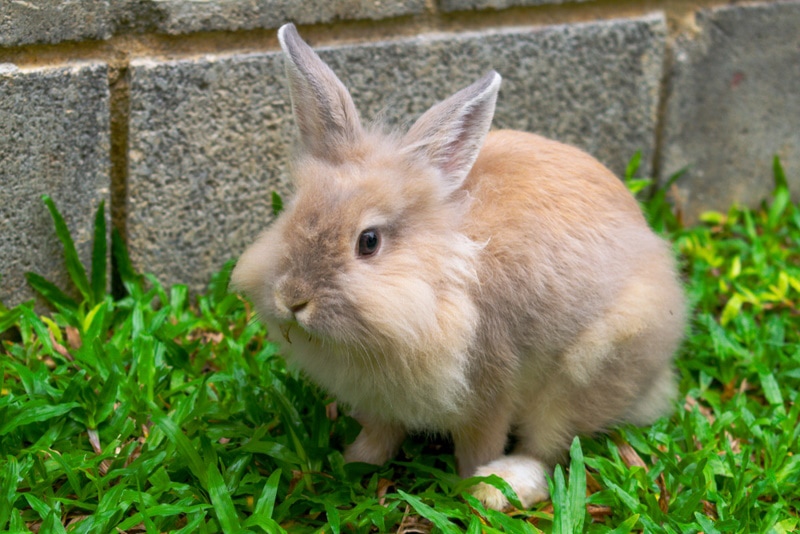
Tan rabbits certainly are cute. The tan color can range from light to darker or can be broken tan instead. Rabbit breeds with this coloring include:
- American Fuzzy Lop
- American Sable
- English Angora
- English Lop
- French Angora
- French Lop
- Giant Angora
- Holland Lop
- Lionhead
- Mini Lop
- Mini Rex
- Mini Satin
- Netherland Dwarf
- Rex
- Satin Angora
3. Red/Orange/Cream
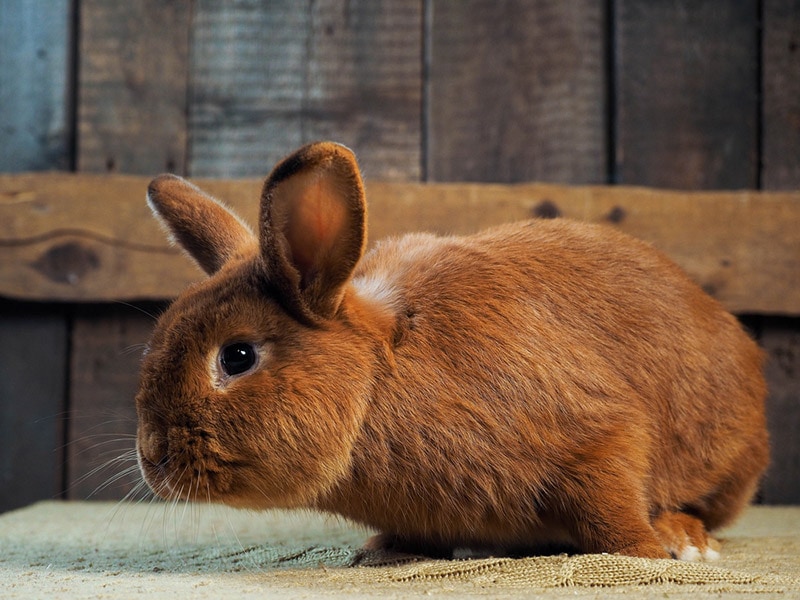
Rabbits can range in color from red to carrot-like orange to cream. Rabbit breeds that can be found exhibiting at least one of these colors include:
- English Angora
- English Lop
- French Angora
- Harlequin
- Holland Lop
- Lionhead
- Mini Lop
- Mini Rex
- Mini Satin
- Netherland Dwarf
- Palomino
- Rex
- Satin
- Thrianta
4. Blue
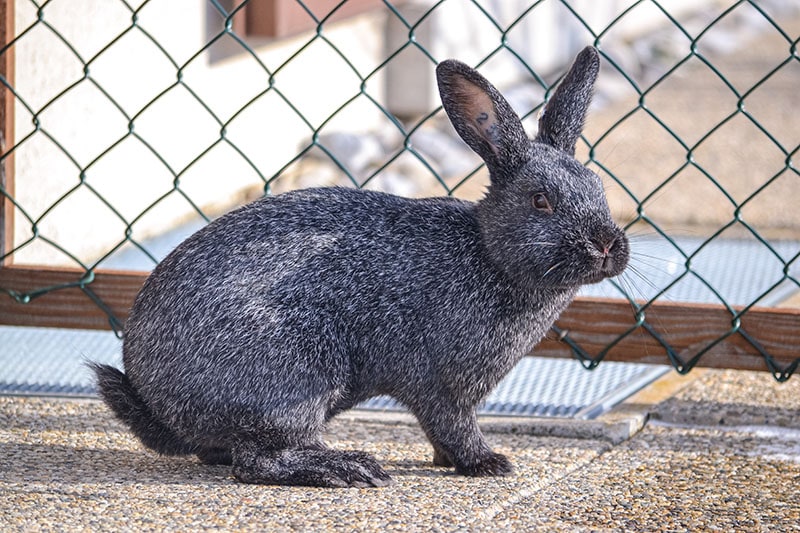
Rabbits come in a range of blue colors that are cool and frosty, like a diluted black color. These interesting tones can be solid or spotted and also include blue tort and blue fawn harlequin colorations. Rabbit breeds that can display this coloration include:
- American Fuzzy Lop
- Beveren
- English Angora
- English Lop
- French Angora
- Giant Angora
- Havana
- Holland Lop
- Lionhead
- Mini Lop
- Mini Rex
- Mini Satin
- Netherland Dwarf
- New Zealand
- Polish
- Rex
- Satin
- Silver
- Silver Marten
5. Black
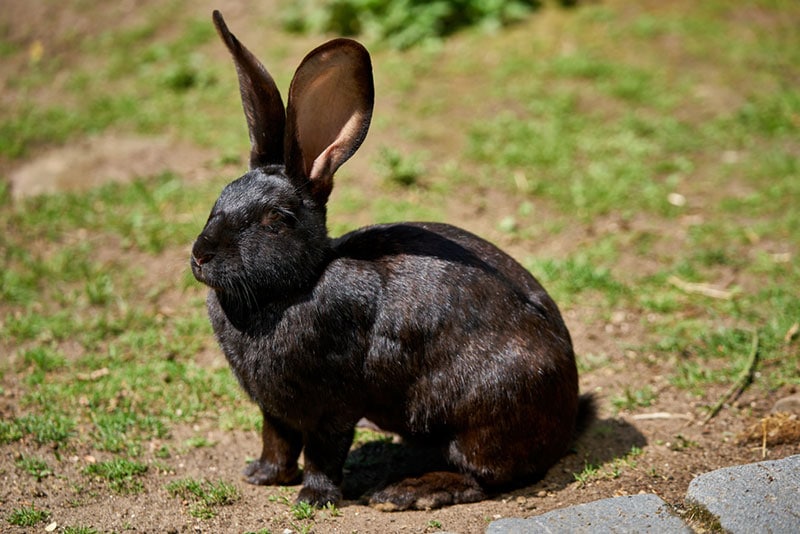
There are several interesting black colors and patterns for rabbits. Black can fade into other colors or make up the majority of a tortie coat—the options are vast. Rabbit breeds that potentially display this coloration include:
- American Fuzzy Lop
- Beveren
- English Angora
- English Lop
- French Angora
- French Lop
- Giant Angora
- Havana
- Holland Lop
- Jersey Wooly
- Lionhead
- Mini Lop
- Mini Rex
- Mini Satin
- Netherland Dwarf
- New Zealand
- Polish
- Rex
- Satin
- Silver
- Silver Fox
- Silver Marten
- Tan
6. Brown /Agouti
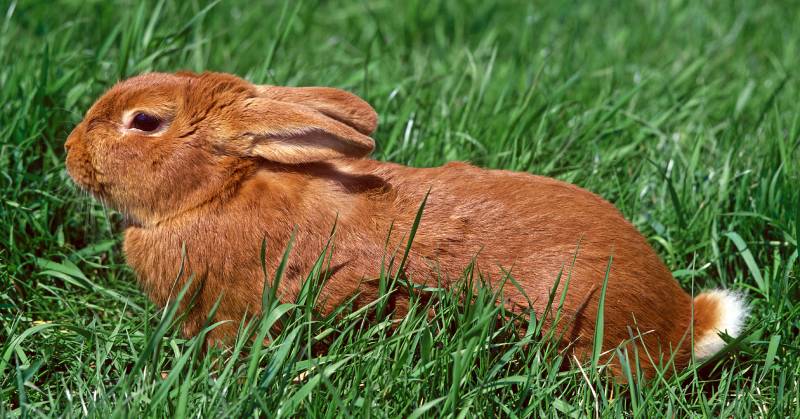
Several colors fall under the brown category, and they are equally beautiful. You can see a more natural agouti color or deep brown, in addition to colors such as chocolate, castor, and chestnut. Brown or agouti breeds include:
- American Fuzzy Lop
- Argente
- Belgian Hare
- Cinnamon
- English Angora
- French Angora
- French Lop
- Giant Angora
- Havana
- Holland Lop
- Jersey Wooly
- Lionhead
- Mini Lop
- Mini Rex
- Mini Satin
- Netherland Dwarf
- Polish
- Rex
- Satin
- Satin Angora
7. Gray/Lilac
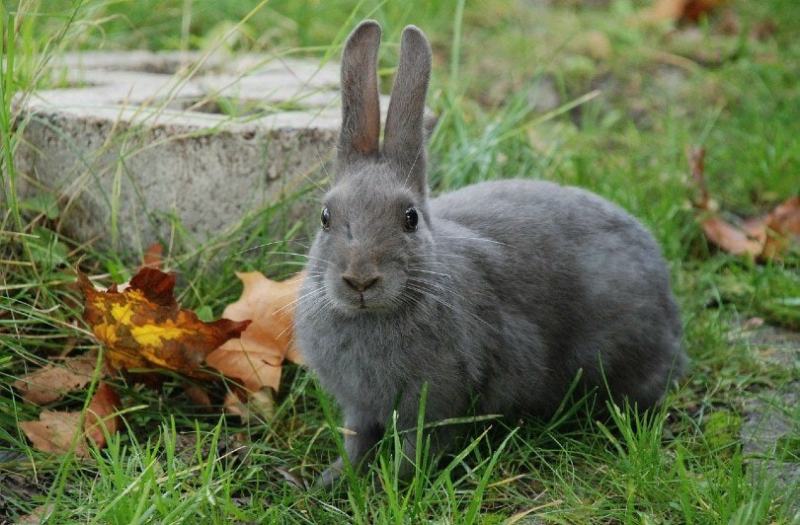
Gray and lilac colorings can be true gray or diluted versions of black. There are several colors and patterns for rabbits that incorporate gray or lilac:
- Opal
- Chinchilla
- Siamese sable
- Sable frosty
- Sable chinchilla
- Lilac/Lavender
- Lynx
- Smoke Pearl
- Broken Ble
- Blue Seal
- Blue Otter
- Magpie
Rabbit breeds that can display a gray or lilac coloring include:
- American Chinchilla
- American Fuzzy Lop
- Champagne d’Argent
- English Angora
- English Lop
- French Angora
- French Lop
- Giant Angora
- Giant Chinchilla
- Holland Lop
- Jersey Wooly
- Lilac
- Lionhead
- Mini Lop
- Mini Rex
- Mini Satin
- Netherland Dwarf
- Rex
- Satin
- Satin Angora
- Standard Chinchilla
Patterns
8. Tortoiseshell
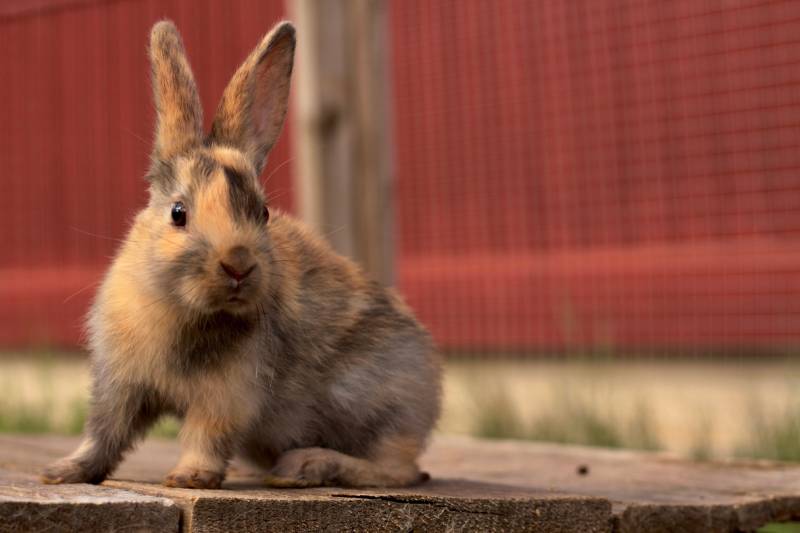
Tortoiseshell is a pattern consisting mostly of black with shades of orange, dawn, blue, chocolate—you name it. This color pattern is especially common in Lop rabbit breeds, but also Harlequin rabbits.
9. Ticking
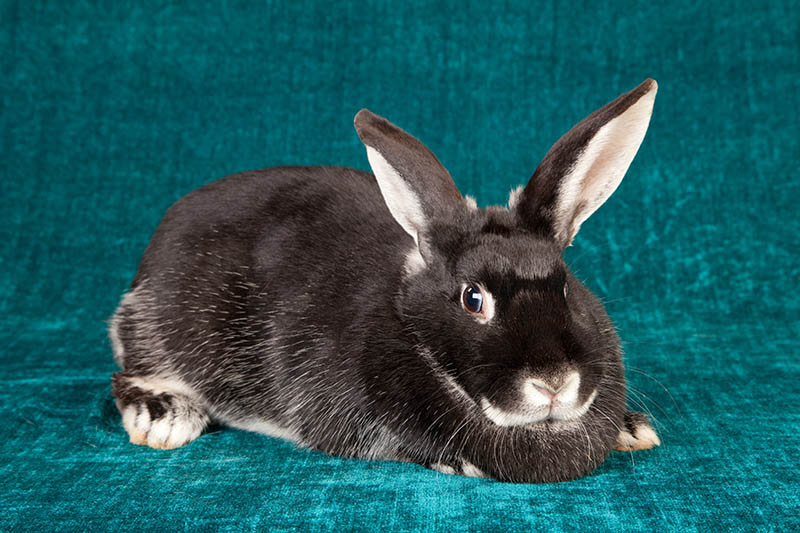
Ticking is a pattern where there are solid or tipped guard hairs of a specific color. It can give the rabbit’s coat an overcast of another hue. For example, Silver Fox rabbits are primarily black with white-tipped guard hairs, giving them the appearance of being an entirely different color. Beautiful!
10. Rex
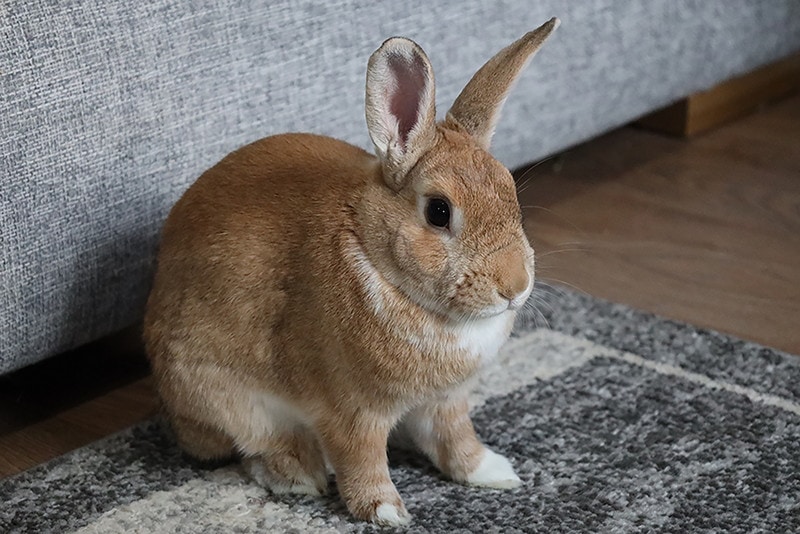
The Rex coat is less of a pattern and more of a texture. It gives a rabbit a curly or wavy look. Rex rabbits can come in many different colorations and patterns.
11. Broken
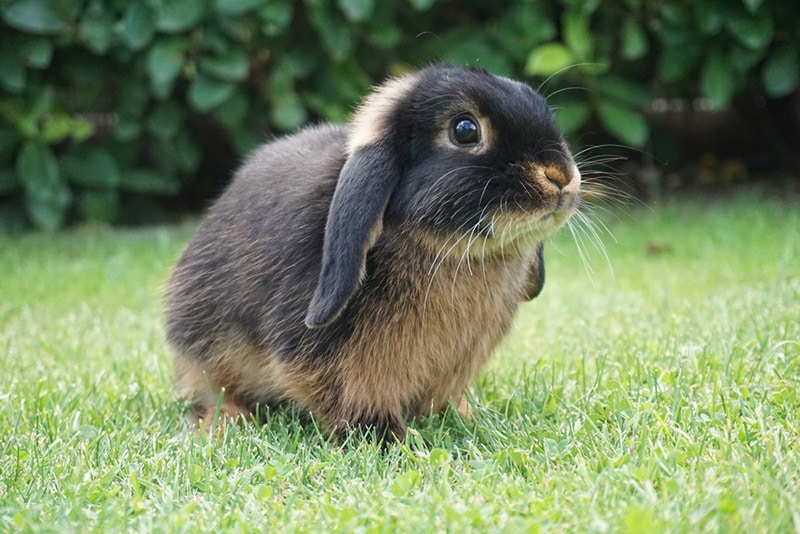
Broken patterns contain two colors—a white background with another spotted color on top. There are many rabbit breeds that can express a broken coloration, but it is very common in lop rabbit breeds.
12. Tricolor

Tricolor rabbits have bold three-color patterns, usually a combination of black, brown/tan, white. The colors can be definitively separated or blended in many different patterns. Other colors you might see in a tri-colored pattern include red and broken red. A common example of this tricolor pattern is the Rhinelander rabbit breed.
American Rabbit Breeders Association Recognized Breeds and Their Colorings
The American Rabbit Breeders Association recognizes all of the above listed colors and patterns, as well as more specific color variations, in their 40+ recognized rabbit breeds. Some rabbit breeds such as the Chinchilla only come in one color, while others, such as the Lops and Angoras, can come in many different colors. You can see all of the recognized rabbit breeds, colors, and other physical descriptions of the breeds on their website.
Conclusion
As you can see, purebreds give way to lots of colors. Mixed breeds offer even more shades than that. This little domestic mammal certainly has some of the most beautiful colors, patterns, and textures to exist. They can virtually look like anything!
Of all these ever-so-adorable bunny colors and patterns, which was your favorite? We know. It’s impossible to pick!
Featured Image Credit: Kaewmanee jiangsihui, Shutterstock

